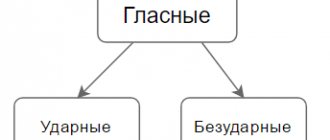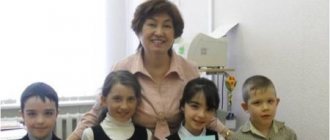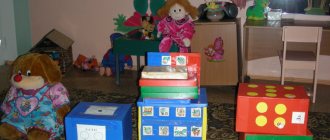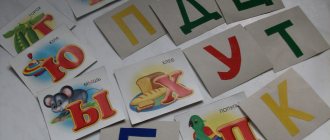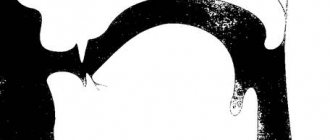Publicity of sounds
Vowels are a type of sound during which the air flow through the larynx or nasal cavity is unobstructed. The vocal cords are vibrated by an air stream. At this moment they are tense and shifted.
REFERENCE! Vowels are sometimes called “mouth openers” because they require you to open your mouth wide to pronounce them louder. This distinguishes them from consonants - “mouth-closers”, because in order to make them louder, you need to bring the organs of the mouth as close as possible.
Vowel differentiation is achieved by changing the shape of the resonator. This could be a change in body position or the root of the tongue or lips. In the languages of the world, nasal articulation and phonation are also possible.
What letters represent two sounds?
Say it out loud and when you push out a long stream of air, you will hear:
- I am ['a];
- e is ['e];
- yu- this ['u];
- ё is ['o].
And these letters can also name two more sounds, and therefore they are also called iotized.
Let's try to sing the words: clear, nimble, spruce, hedgehog. What are we doing? Be careful and catch these notes!
Well done! We hear two sounds! Remember guys, this magic happens at the beginning of a word, or if e, e, yu, I comes after a vowel, hard and soft sign.
For example:
- hedgehog – [y'ozh];
- lighthouse - [may'ak];
- eat - [s'y'em].
Letters representing two sounds: e, e, yu, i. They also play a second role: they soften the consonant that comes before them. For example: p' pechka, l' hole, t' warm, t' yuk.
Formation of vowel sounds
Any sound begins with the release of air from the lungs, then it is directed to the larynx and exhaled through the mouth or nose.
When we pronounce vowel sounds, our vocal cords in the larynx - two soft folds of muscle - vibrate. In normal breathing mode, this organ is in a relaxed state. If the ligaments are stretched and brought closer together, forming a narrow gap between them, the air flow causes vibrations.
Then the air stream formed by the voice passes freely and unhindered through the oral cavity. Thus, a vowel sound has tone, but there is no noise in it.
The specificity of the sound of a single vowel changes depending on the position of the tongue and lips, that is, on articulation.
REFERENCE! Articulation is the movement of the pronunciation organs when producing sounds.
Stressed and unstressed vowel sounds
There are strong and weak vowel positions. They correspond to their stressed and unstressed positions.
The clear pronunciation of a stressed vowel is contrasted with the reduction of unstressed vowels. In a weak position, articulation is less distinct, the duration and quality of sound is reduced.
REFERENCE! This is associated with errors in the spelling of unstressed vowels in words. For example, in the word “street”, [and] is unstressed and is heard as something between [and] and [e].
The reduction is not the same for different sounds. It is also directly proportional to the rate of speech: the faster the speech, the greater the reduction.
Thus, in Russian, the strong position of vowel sounds makes the differences between them more obvious.
Yotated vowel sounds
Six vowel sounds correspond to 10 vowel letters of the Russian alphabet, 4 of which are formed by a pair with a consonant [y'] - ya [y'a], e [y'e], yo [y'o], yu [y'u]. In syllables and words, these iotated letters indicate the corresponding vowel sound coming after a soft consonant: forest [l'es], ball [m'ach'], and so on.
Differentiation of vowels of the first and second row
Lesson notes
Subject. Differentiation of vowels of the first and second row. Target. Teach children to distinguish vowels s
- both orally and in writing.
Equipment. Text of the poem by S. Pogorelovsky “Oh and the problems in Mishka’s notebook”, table with vowels of the first and second row.
Progress of the lesson
I. Organizational moment.
The speech therapist invites students to remember and name the vowels of the first and second row.
II. Repetition of previously covered material.
The speech therapist invites students to remember how vowels of the second kind are formed. Posts a table with vowels of the first and second row.
| A | 0 | U | uh | s |
| I | e | Yu | e | And |
Offers to compare pairs of vowels: a
-
I, o
-
e, u
-
y, e
-
e, s - i.
The similarity of these pairs in articulation and the difference in spelling are revealed.
“These vowels are called paired vowels. In order not to confuse them when writing, we will learn to distinguish between them,” says the speech therapist.
III. Working with a poem.
The speech therapist reads a poem.
- What are you looking at, cow, Strictly and sternly?
— Teddy Bear with an “a” Written by a cow, Write it by you
Teddy bear with “s”, Teach Teddy bear a lesson - Turn it into a mouse. Cat grab mouse! There will be a quitter to know.
The speech therapist invites children to compare the words Mishka
and
a mouse
in meaning and spelling. Writes these words on the board. He asks what letters differ in the spelling of these words.
IV. Differentiation _
- and in syllables.
1. Listen to the syllables. Say what vowel you hear.
a) Py, you, we, sy, ry, dy, would, ky;
b) pi, ti, mi, si.ri, di, bi, ki.
“How are the consonants you heard first and then pronounced? (Hard, soft.)
What sound here indicates the softness of the consonants? - asks the speech therapist.
2. Repeat the syllables after the speech therapist.
Py
-
pi
-
pi, ti
-
you
-
ti, sy
-
sy
-
ei, ri
-
ry
-
ry" dy -
di -
dy.
3. Write the syllables in two lines: sy - in the first, si - in the second.
We, si, sy, mi, ry, ri, ti, you, ky, ki, li, pi, py, ly.
. Task 4. Complete the words by inserting the syllables given in brackets.
Gri...(o's), li...(ly), le...(tsh), bo...(would),
ru...(/sh), ry...(by), la...(gay), but...(gy),
book...(gi), so...(you), ke...(dy), be...(gi),
ke -
d...(ry),
ko...(you),
ka...(ti).
V. Summary of the lesson.
The speech therapist asks the question: “What sounds and letters did we learn to distinguish today? »
Training exercises
Task 1. Insert the missing letter ы or и. Write down the words. Read them.
R...s, m...s, m...r, s.r, k...t, r...s, b...t, m...lo, l...pa, L...yes, k...but, R...ta, s. ro, s.la, m...l..., v..”l..., v...l..., l...s..., r...l..., p...l..., p...l... .
Task 2. Complete the words by adding the letter s or i.
Nog..., table..., books..., poppy seed..., cheese..., crowbar..., ball..., sak..., beads..., chicken..., salt..., rubbish... .
Task 3. Change the words according to the model. Name the last syllable in the resulting words, then the last letter.
Sample: garden
-
gardens, y, y.
Goat - ..., owl - ..., fly - ..., game - ..., wasp - ..., rose - ..., lemon - ..., boot - ..., dog - ..., glass - ..., bush - ..., lynx - ..., ship - ..., table - ..., heap - ... .
Task 4. Write down the words, dividing them into syllables. Underline the syllables with ы, и
different pencils.
Mountains, flies, cinema, fish, boil, litter, mosquitoes, lanterns, crackers, fishermen, markets, whales, fish, little fish.
Task 5. Write down the words graphically, write s, and.
(The speech therapist names the word, students depict it graphically, taking into account the number of syllables, write the letter s or i above the corresponding syllable.)
Juices, soap, geese, damp, honeycombs, pitchforks, pieces, bushes, stamps, cards, goats, boots, fishermen, leaves, carriages, crackers, patterns, lessons, music, bubbles, engines.
Task 6. Make words with the letters s, i.
Compare these words by meaning and sound.
Compose an oral sentence with each word: ы
ы ы.
s.
s. WilS drank in\. ugh
vCh
?li p\ /lil
and and and and
Exercise 1.
Write down the words, underline them, and use different pencils. Explain why after the letters zh, w they wrote the letter i (remember the rule).
Mice, reeds, tires, skis, knives, fats, cars, stewed, galoshes, decided, width, survived, saffron milk caps, burdocks, springs, silence, height, burned out, embroidered.
Task 8. Read the sentences. Write down words with the letter s in one column, si in another, with the letters s. and and
- in the third.
Dad had a drink. Rita bought soap. Tanya's teeth hurt. Nina has beads. Smoke is coming from the chimney. Plum trees grow in the garden. It's damp in the forest. The car has new tires. Misha has lilies of the valley.
Mila and soap.
Mila didn't like soap. But Mila didn’t whine.
Mom washed Mila with soap. Mila is a great girl.
Task 9. Vocabulary dictations.
Smoke, darling, soap, fish, cows, themselves, lessons, true story, was, saw, mushrooms, wolves, foxes, bushes, hares, bears, carpets, crabs, ponds, floors, kids, mice, once upon a time, ears, saffron milk caps, mosquitoes, silence, spring, puddles, roofs, swifts, turns.
Explain the word: turns.
Task 10. Test dictations.
Mila and Nina washed Sima. Misha and Vitya are kids. Nina washed Misha. Mila washed Vitya. In winter, the fish went to the bottom of the river. The children were looking for acorns. The chickens were digging the beds. Wolves howled at night.
Winter.
Winter came. The winds are blowing. There are snowdrifts all around. Quiet in the forest. The birds have flown away. The animals went into holes.
Children are happy about winter. They got on their skis. We took a sled and went down the mountain. The rollers are being filled.
Differentiation a-z Training exercises
Task 1. Listen to the syllables. Say what vowel you hear.
Ma, na, sa, ka, la, pa, ra, ta, fa, va Me, nya, sya, kya, la, pya, rya, cha, fya, vya
How do the consonants sound in the syllables of the first and second lines. Which vowel indicates the softness of consonants?
Task 2. Say the syllables in pairs. Highlight the vowels in the syllables. Sample: ma
-
me, ah, me.
ma - mya ta - tya la
- la va - vya da - da
pa
- pya sa - sya ra - rya - kya ba - : bya.
Task 3. Listen, memorize and repeat the series of syllables.
that
-
cha
-
ta ma
-
me
-
ma bya
-
ba
-
bya
you
-
ta
-
ya me
-
ma
-
me ba
-
bya
-
ba
rya-ra-rya-ra ra~rya-ra-rya
Task 4. Write the syllables in two lines: the first with the letter a,
in the second with the letter i.
\Sh
La, la, sya, tya, sa, pa, pya, rya, la, ra, ba, bya, vya, yes, va, dya.
Task 5. Complete the word by adding the letter a
or
me.
Write these words down.
Mo..., Zo..., Mil..., Mish..., snake..., fish..., sea..., earth..., grass..., country..., seed..., seed..., sedge..., vym..., mountain... .
Task 6. Complete the word by adding a syllable with the letter a or z. Write these words down.
Va-...,0-...,Ma-...,Ka-...,I-...,nya-...,ba-...,ra-...,bass-...,mo..., stra-..., dog-..., bese-... , sobo-...,, be-..., seme-..., lebe-....
Task 7. Compare the words small, crumpled
by meaning, by the sound of the first consonant, by the spelling of the vowel.
Task 8. Copy the words by inserting the missing letter a or z.
B. ..k, r...d, m...k, vr...h, s.d, m...h, v...z, m...h, v...z, t...z, m...so, k...sha, d...dya, gr...dy, r...dy, gr...chi, shl...pa, v...li, vr...gi.
Task 9. Write down the words graphically, write the vowels a, z
above the corresponding syllable.
SAMPLE: a) ___ a,
b)___
yaa
a) Fish, belt, rows, hide and seek, yarn, spinning wheel, mud, belt;
b) ducklings, wilted, wagons, ripe, dirty, button accordions, blue, all kinds >:'.->.
Task 10. Write down the words, dividing them into syllables, underline the letters a, z
pencils of different colors.
board, stamp, snake, belt, army, brothers, blot, stork, scarlet, sluggish, old, earthly.
Task 11. Compare pairs of words by meaning, by the sound of the first consonant and the spelling of the vowel. Orally come up with a sentence with each word.
Small - crumpled, glad - row, blockage - wilted, garden - sit down.
Task 12. Read the sentences. Write down the words starting with the letter a
in one column, with the letter
i
- in another column, with the letters
a, z
- in the third.
Our Maya is small. Natasha dug the hole herself. Masha took the ball. Borya was looking for berries. Lyuba crushed the clay. Allah, sit down and read the book yourself. Allah is small but smart.
Task 13. Copy the sentences, insert the missing letter a
OR ME.
V...li has s...v...li rum...shki. Ir..., An... and V...l...play...in pr...tki. Ir... drove..., and V...l... and An... were r...house. N...d...and D...Sh...ed...t l...pshu. Kol... r... d, he pop... l in the first r... d.
Task 14. Vocabulary dictation.
Himself, sit down, glad, rows, shaft, sluggish, doctor, time, meat, mint, lighthouse, snake, bright, meat, fish, boiled, udder, seed, viburnum, raspberry.
Task 16. Test dictations.
The duck has ducklings. The cat has kittens. The fox has cubs. The bear has cubs. The cow has calves. Moose have moose calves.
Raya and Maya eat raspberries. There are cherry and apple trees in the garden. Mint is a healthy herb. No rain. The grass has withered. There was an old rag lying on the floor.
Differentiation o—e Training exercises
Task 1. Read the words nose, carried.
Compare these words by meaning, sound and spelling. Think about the letters that distinguish these words.
Task 2. Listen to pairs of syllables. Tell me how the consonants sound in each pair, which letter indicates the softness of the consonant.
mo
-
myo so
-
syo ro
-
ryo vo
-
her
bo -
byo
-
pyo to
-
te lo
-
le but
-
ne fo
-
fe
Task 3. Pronounce the syllables in pairs.
om
-
yom from -
yot to
- te
ko - kyo vo -
her os
- yos or -
er se -
so ryo - rool -
el. Task 4. Memorize and repeat the rows of syllables.
mo - mo - mo mo - mo - mo - mo
then - those - that - those - that - those
me - mo - me me - mo -* me - mo
those - those - those - those - those - that.
Task 5. Write the syllables in two lines: with the letter o
in one line, with the letter
e
- in another.
from, ot, om, eat, se, so, po, pyo, or, er, lo, le.
Task c. Write down the words graphically, write the letters o, e.
Above the corresponding syllables.
Sample: __ o_ e
Bonfire, ruff, goat, village, salt, donkey, catfish, cheerful, salmon.
Task 7. Compare pairs of words by meaning and spelling. Orally make up a sentence with each word.
The cart was carrying, the nose was carrying, the ox was leading.
Task 8. Fill in the missing letters o, e
in words.
Tel...n...k, goat...n...k, ut...n...k, fox...and...k, lamb...n...k,
puppy...k, foal...n...k.
Task 9. Write down the sentences. Underline the letters o, e
different pencils. Break the highlighted words into syllables.
A birch tree grows in a field. It has a white trunk and green leaves. In spring, birch trees have catkins. The rooks have built nests on the birch tree.
Hedgehog.
Alyosha was in the forest. He was carrying mushrooms. On the path he saw a hedgehog. The hedgehog ran to the Christmas tree. Alyosha did not touch the hedgehog.
Mystery.
Who gets up early, sings loudly, and doesn't let us sleep?
Task 10. Copy the sentences by inserting the missing letter o
or
e.
L...nyapriv...sound...zena. We heard r...v bull...v. Ut...ti P...is there a t...lka T...mka. Pch...lka does m...d. L...sha has n...new slippers.
Task 11. Vocabulary dictation.
Dark, stomp, darn, chalk, sweep, chick, push, buckets, cake, hastily, brooms, glass, table, tears, clown, maples, willows, water, trunk, freeze, salt.
Task 12. Precautionary dictations.
Thank you, frost, for bringing snow. Leva led the ox. We're going into the house. There are new oars in the boat. A big fish bite began. The school has a maple tree. Vova chalked the floor.
Maple.
Maple grew. The maple is tall. The maple has a beautiful leaf. Syoma and Borya sat down by the maple tree.
Hedgehog.
The hedgehog lives with Leva. The hedgehog has needles. Leva feeds the hedgehog milk. Leni also has a hedgehog.
Ruff and bream.
Uncle Lenya is a fisherman. He caught a lot of fish. Here's the bream. Here's a ruff. Ruff and bream are delicious fish.
Distinctive features of vowels
Vowels differ from each other due to the nuances of sound formation. As a rule, this is due to the position and mechanism of operation of the resonator - limited by the shape and size of the physical body in which the air produces resonance.
The largest resonator is the oral cavity, so it is this part of the speech apparatus that greatly influences the quality of sound. The shape of the oral cavity changes in response to changes in the vertical and horizontal position of the tongue.
The lips are responsible for the shape of the hole through which the air stream passes. This also affects the sound and is called labial articulation or labialization (translated from the Latin labri - “lips”).
REFERENCE! Differences between vowels are necessary for them to perform a semantic distinguishing function.
Climb
The rise is determined by the vertical position of the tongue body. He can be:
- upper - the back of the tongue comes closest to the palate. This rise forms closed vowels: [i], [s], [u].
- Middle-upper - the tongue rises to 2/3 of the oral cavity, forming half-open vowels: [e], [o].
- Middle-lower - sounds are pronounced with the lower elevation of the tongue (by 1/3). It corresponds to half-closed vowels.
- Lower - the tongue remains motionless. As a result, open vowels are pronounced: [a]
IMPORTANT! Not all languages recognize all four rises. For example, half-closed vowels are not found in Russian speech.
Row
The vowel series is determined by the horizontal movement of the body of the tongue. Depending on the position it can be:
- anterior - the tongue is as close to the teeth as possible ([i], [e]),
- middle - the tongue occupies a middle position, i.e. remains without movement ([a], [s])
- posterior - the body of the tongue produces sound in the back of the larynx ([u], [o]). Sometimes back vowels are called “dark”.
IMPORTANT! In case of speech defects, anterior articulation [y] and [o] is possible. This occurs if the tip of the tongue is close to the front lower teeth, and the back of the tongue is arched. As a result, in words where hard vowels are pronounced according to the norm, they are softened.
For example: instead of “pol” [pol] - [p'ol], instead of "remote" [pul't] - [p'ul't]. In addition, excessive protrusion of the tongue when pronouncing the sound [e] until it touches the lower lip appears as a case of exaggerated articulation.
Roundness (labialization)
The shape of the resonator - the oral cavity - can also be changed using the lips: by “protruding” them forward (in the form of a tube) or by rounding them. An example of the first method of labialization is the Russian sound [u], the second - [o].
REFERENCE! Together with these vowels, the consonant sounds that precede them are labialized.
It is noticed that only the back vowels are rounded, while the sounds of the front and middle row remain unlabialized.
Nasalization
The Russian language uses articulation through the oral cavity. However, in other languages, nasalization is used - an articulatory technique in which the soft palate (velum) is lowered and air is released through the nasal cavity.
Thus, the nose acts as an additional resonator. Examples of nasalization are common in English and French.
Nasal vowels are opposed to oral vowels (oral, pure, simple), formed with a raised soft palate without the participation of the nasal cavity.
REFERENCE! In the Russian language, nasalization occurs as an articulatory defect - nasality.
Phonation
Phonation is the production of sound using the larynx. Sound quality is determined by the tension and position of the vocal cords.
The mechanism of action can be described as follows: at the exit from the trachea, a stream of air passes through the larynx and the vocal cords located in it. The following development options are possible:
- If they tense and come together, the exhaled air causes vibration. This is how a tone arises, which is required for vowels and voiced consonants.
- Relaxed vocal cords and spread arytenoid cartilages allow air flow to pass without hesitation. As a result, there is no tone, which is typical for the pronunciation of voiceless consonants.
The extreme positions of the vocal cords are called the modal voice (vibration with maximum amplitude) and the laryngeal stop (full reduction).
Usually, free vibration is necessary for the articulation of vocal vowels, however, in the practice of world languages there are cases:
- squeaky voice (Vietnamese),
- voiceless vowels (Japanese).
Tongue root position
The difference in the sound of vowels in some cases is influenced by the position of the root of the tongue:
- pushed forward
- pushed back.
REFERENCE! The contrast between such articulations is not always obvious, except in a number of West African languages (Bambara, Hausa, Yoruba, Djerma, etc.)
Additional articulations
The types of phonations considered do not exhaust the entire variety of possible narrowings in the vocal tract.
For example, in Even, Ket, Tofalar and dialects of the Tuvan language there are vowels formed as a result of narrowing of the pharynx. Such sounds are called pharyngealized. In some cases of pharyngealization, vibration occurs not in the vocal cords, but in the epiglottis.
Erization
The term is derived from the name of the letter k (“er-”) and the suffix “-ization.” In practice, it means adding the suffix er to a word or syllable. This is typical for English and Beijing Chinese. Erization performs a meaning-forming function
When articulating, the technique is expressed in a slight bend of the tip of the tongue back when pronouncing vowels.
"Tension"
Depending on how strong the articulation is, there are:
- "tense" or cardinal vowels,
- "unstressed" vowels. In order to pronounce them, the articulators do not reach the extreme points of position and the sounds remain in the intervals between different rows and rises.
REFERENCE! This quality is not always identified as a phonetic feature; most often it is attributed to a phonological nature.
Longitude
Longitude is a characteristic of sounds that differ in longer or shorter duration relative to each other. In accordance with this feature, short and long vowels are distinguished. Long vowels are indicated using a colon - [aː], [oː], [andː]
In modern Russian, longitude-shortness does not have a meaning-forming meaning, so often a long vowel is perceived as stress or unusual intonation (for example, the exclamation: “Maaaam! It’s blowing me”).
IMPORTANT! A stressed sound is always longer than an unstressed sound. The sound located as the second pre-shock sound, on the contrary, is the shortest.
For example, “Valentine” - contains short [a] and long [and:]
In addition, longitude is characteristic of double sounds, that is, formed by two identical vowels at the junctions of morphemes (surnames, realities, herbariums - [and:] at the end).
The meaningful role of long or short vowels is obvious in the English language. For comparison, here are pairs of words that are different in spelling but almost identical in sound:
- live - leave,
- dock - dork,
- bins - beans,
- ship - sheep
Shva
Sheva (meaning “nothing” in Hebrew) is a vowel sound produced without special articulation. When pronouncing it, the articulators do not make any significant movements and the sound remains neutral. When parsing phonetically, it is indicated by the symbol [ə].
The seam is located in the middle row of the middle rise. It sounds like a cross between [a], [e] and [o].
REFERENCE! As a rule, it is located in an unstressed position, characteristic of the endings of nouns of the 1st declension: “cow” - [ka′rovə], “dog” - [sa′bakə].
Acoustics
When considering the acoustic properties of sounds, the following vibration characteristics are analyzed:
- frequency, which determines the pitch of sound;
- amplitude, responsible for its strength;
- a combination of different vibrations that affects timbre.
Acoustic classification is dichotomous, that is, it identifies pairs that are opposite to each other. From this point of view, vowels:
- all are vocal, as they are formed by tone;
- all are non-consonant, that is, they are characterized by greater strength than consonants;
- all are continuous;
- the front vowels ([e], [i]) are high, and the middle and back vowels ([a], [o], [u] [s]) are low;
- vowels of the lower and middle rise ([a], [e], [o]) are compact, that is, their vibrations are relatively close to each other, the vowels of the upper ([i], [ы], [у]) are diffuse;
- rounded vowels [o], [u] are flat, unrounded vowels [a], [e], [i], [s] are non-flat.
Phonology
Phonology (from the Greek “sound” and “teaching”) is a branch of linguistics devoted to the study of the structure of the sound structure of a language and the functioning of sounds in the language system.
If we take a vowel sound as a phoneme - a unit of language that does not have independent lexical and grammatical meaning - then its functions are obvious:
- act as the core of a syllable, that is, its obligatory element. In some languages, sonants or obstruents take on this role.
- bear emphasis, that is, highlight words within a word;
- determine tone, that is, use pitch to differentiate meaning within words or morphemes.
Sound analysis of the word
Dear guys, if you were very careful, you saw square brackets and a dash above some sounds. Why is all this needed? The fact is that the spelling and pronunciation of words are different. The pundits thought about how to indicate a sound in writing and came up with the idea of writing it in square brackets. And the checkmark on the upper right side indicates that this sound is soft - it is pronounced differently - more gently. For example, let's say the word "meow". How do we hear it? We write in square brackets: [m'au]. And in the word “fly” - [m] hard.
The recording in the form in which the word is heard is called sound analysis of the word (sound pattern). In high school we will call it “transcription.”
The vowels determine whether the consonant sound is hard or soft.
Remember that if a consonant comes before the vowels e, ё, yu, ya, and, it will be soft.
Vowels - o, e, s, a, u leave the consonant hard.
Exercise
Read the words and make a sound analysis. Try to find soft consonant sounds.
- Baby.
- River.
- Forest.
- House.
Answer: [baby], [r'eka], [l'es], [house].
Diphthongs and Triphthongs
Depending on whether the acoustics of a sound changes during its articulation, there are:
- monophthongs,
- diphthongs,
- triphthongs.
Monophthongs are integral and do not break down into elements. Diphthongs and triphthongs, on the contrary, contain transitions from one sound type to another (and a third).
REFERENCE! In turn, they can be descending (the top of the syllable is the first vowel), ascending (the top of the syllable is the last vowel), and ascending-descending triphthongs occupy an intermediate position.
Russian vowels are predominantly monophthongs. Exceptions are iotated sounds corresponding to the letters i, ё, yu, e. However, if they are paired with consonants, they denote a monophthong and only soften the preceding sound.
For example: “I sing” [poy'u] or “yula” [y'ula], where [y'y] is an ascending diphthong; but in the word “love” [l'ubof'] there is no diphthong.
Thus, vowel sounds are represented in the world's languages in all their diversity. Some of their characteristics are inherent in Russian-language speech, others are expressed only as articulatory defects.
Related posts:
- Rhoticism in speech - complete information Rhotacism (problem with the sound [P]) is the most common disorder in children...
- A child does not know how to say R - we’ll show you how to teach it. To teach a child to pronounce the letter R, you need to regularly perform special...
- What do we know about Morse code? Morse code was created to transmit short information. But use...
- Teaching a child to read Teaching reading in preparation for school. When can you teach a child...
